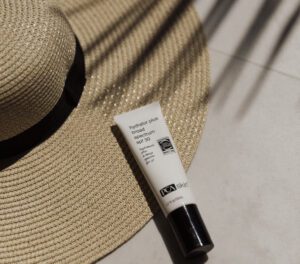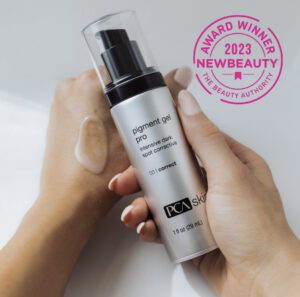Hyperpigmentation is a skin condition that causes patches of the skin to become darker than the surrounding areas. The culprit is an overproduction of melanin, the pigment responsible for giving color to our skin, hair, and eyes. And there are different types of hyperpigmentation:
Freckles which are genetic and not a cause for medical concern are the most common type of pigmentation. Without proper sun protection, UV-B radiation will produce constellations of melanin a.k.a freckles to become darker and more visible.
Post-inflammatory Hyperpigmentation a.k.a PIH occurs when a pimple causes inflammation to the skin. Depending on skin tone, these spots may range in color from pink to red or brown to black. If you have acne/blemish prone skin, it’s very important to use the appropriate skin products and receive regular treatments as is the case with every skin concern.
UV induced a.k.a solar lentigines is another form of pigmentation. UV radiation causes DNA damage stimulating melanocytes to produce melanin resulting in liver or sun spots.
Hormonal Hyperpigmentation a.k.a. Melasma or chloasma (for which there is no cure) is also a very common skin problem. It’s characterized by patches of brown to gray-brown skin. Typically people get it on their upper lip, forehead, chin, bridge of nose and cheeks.
Managing hyperpigmentation:
Sun Protection: Since UV exposure is a major factor in many cases of hyperpigmentation, protecting your skin from the sun is crucial. Use broad-spectrum sunscreen with at least SPF 30 daily.
Topical Treatments: There are various creams and serums that may help fade hyperpigmentation. Ingredients like retinoids, vitamin C, kojic acid, and alpha hydroxy acids (AHAs) can be effective. However, it’s essential to use these products as directed and be patient, as results may take several weeks to show.
Professional Guidance: If you’re dealing with severe or persistent hyperpigmentation, it’s best to consult a skin specialist who can recommend a personalized treatment plan.
Results may vary depending on the type and severity of hyperpigmentation. Consistency with sun protection and any recommended home care is key to achieving the best possible outcomes.



